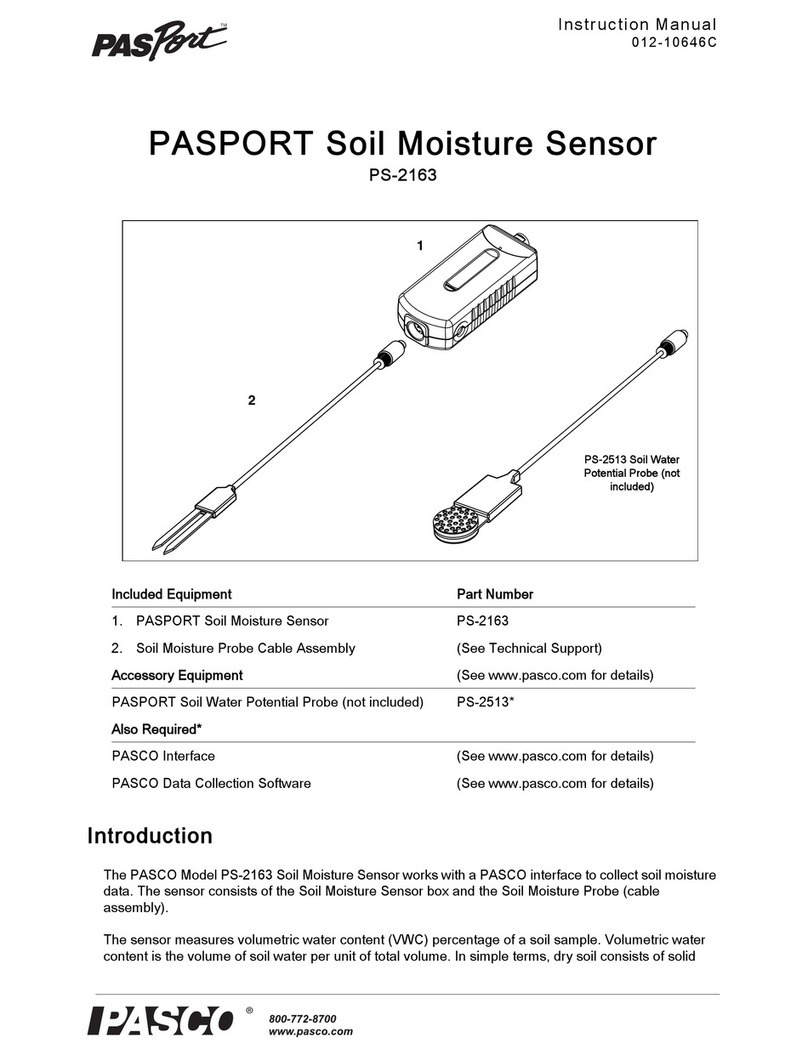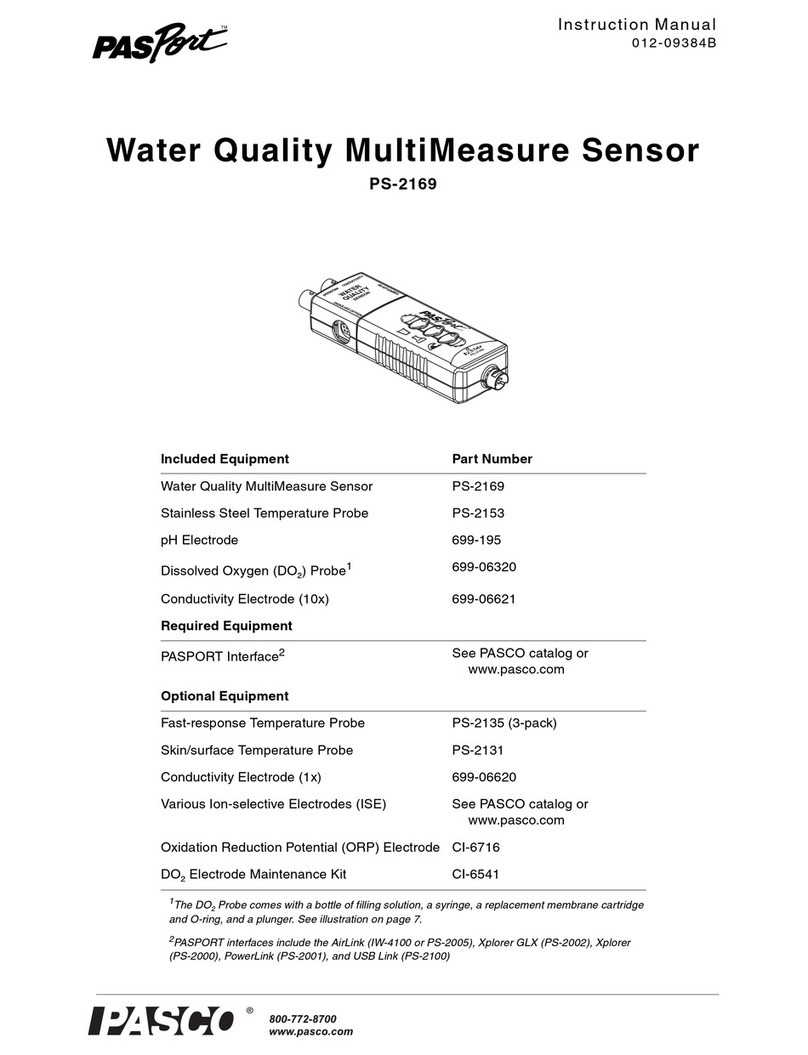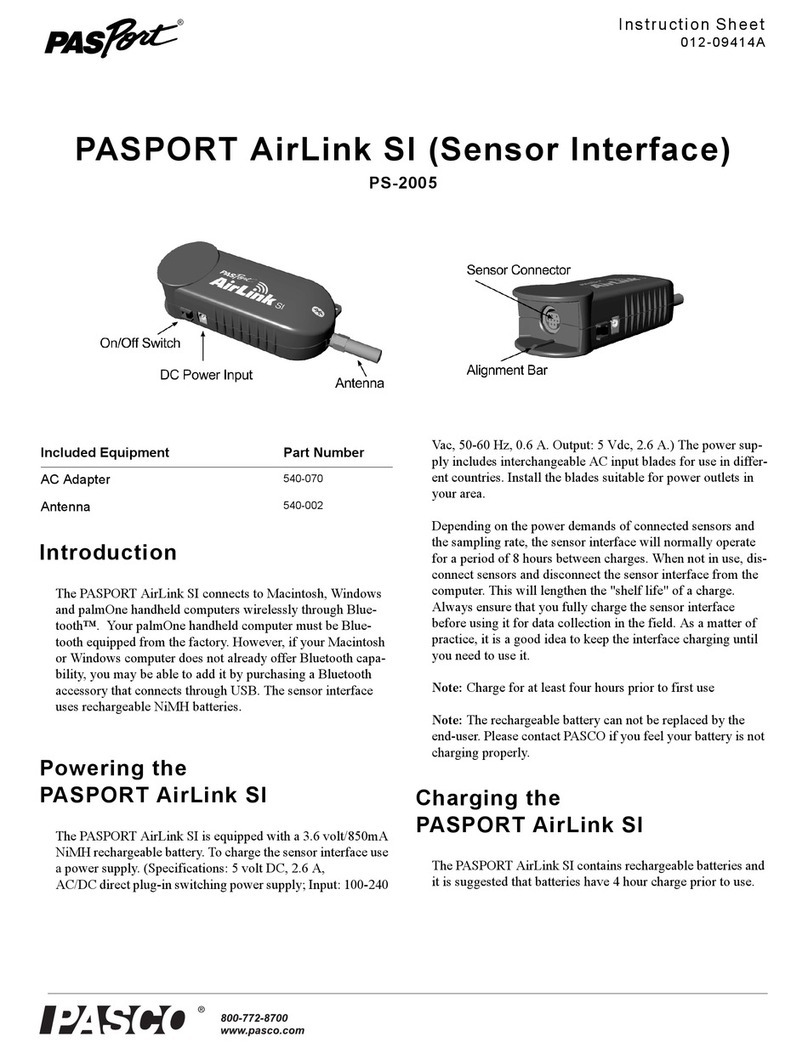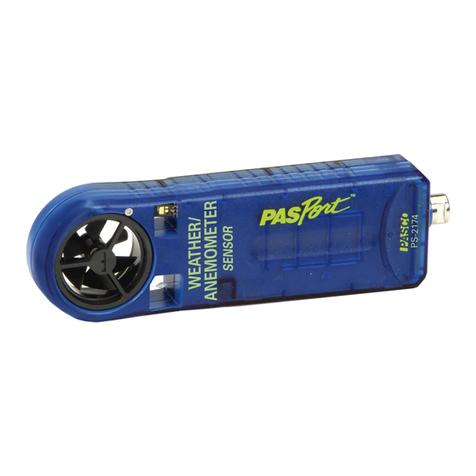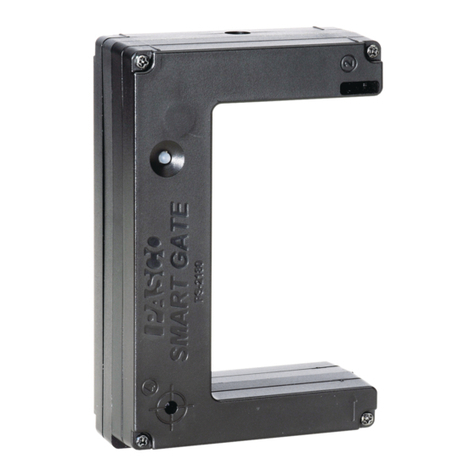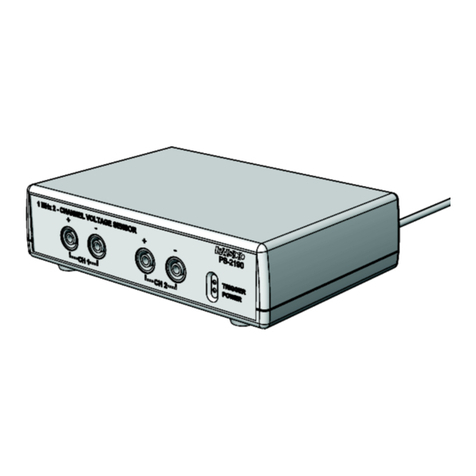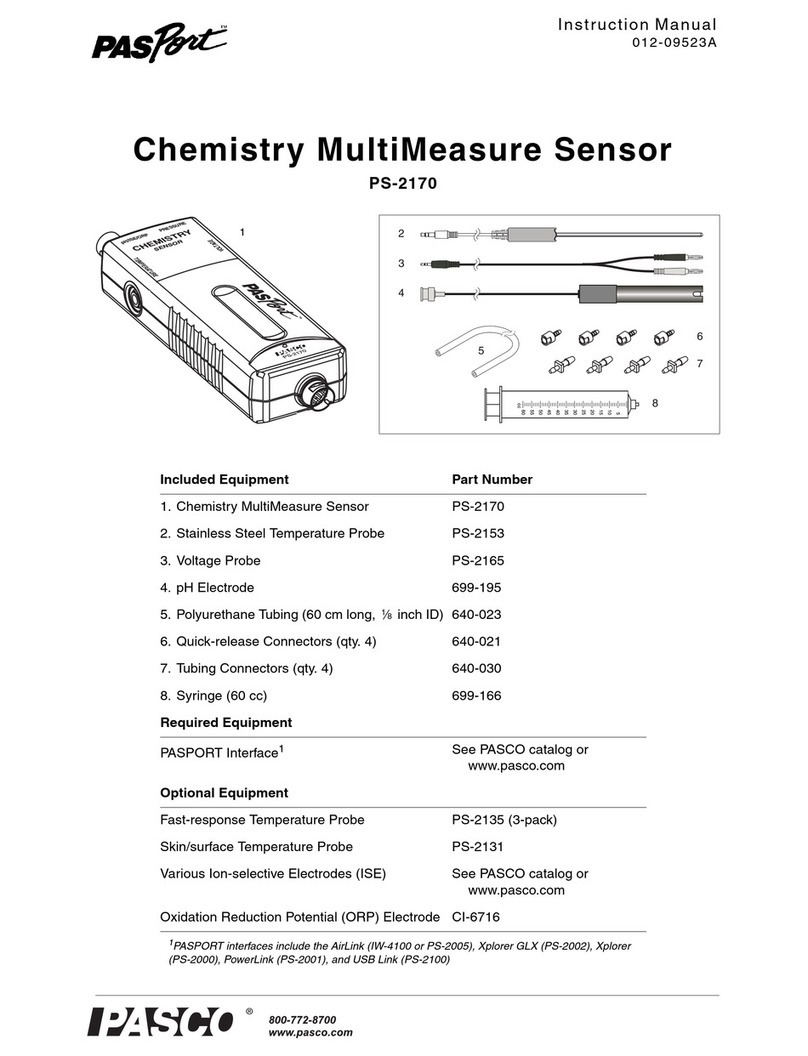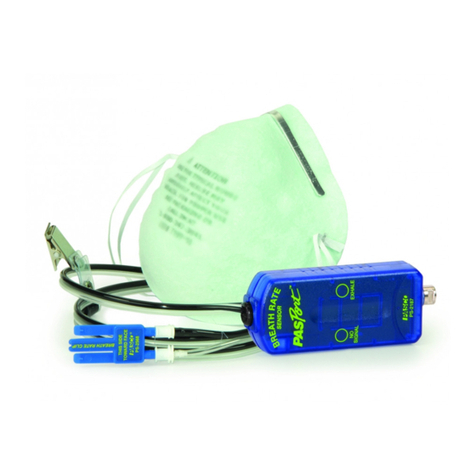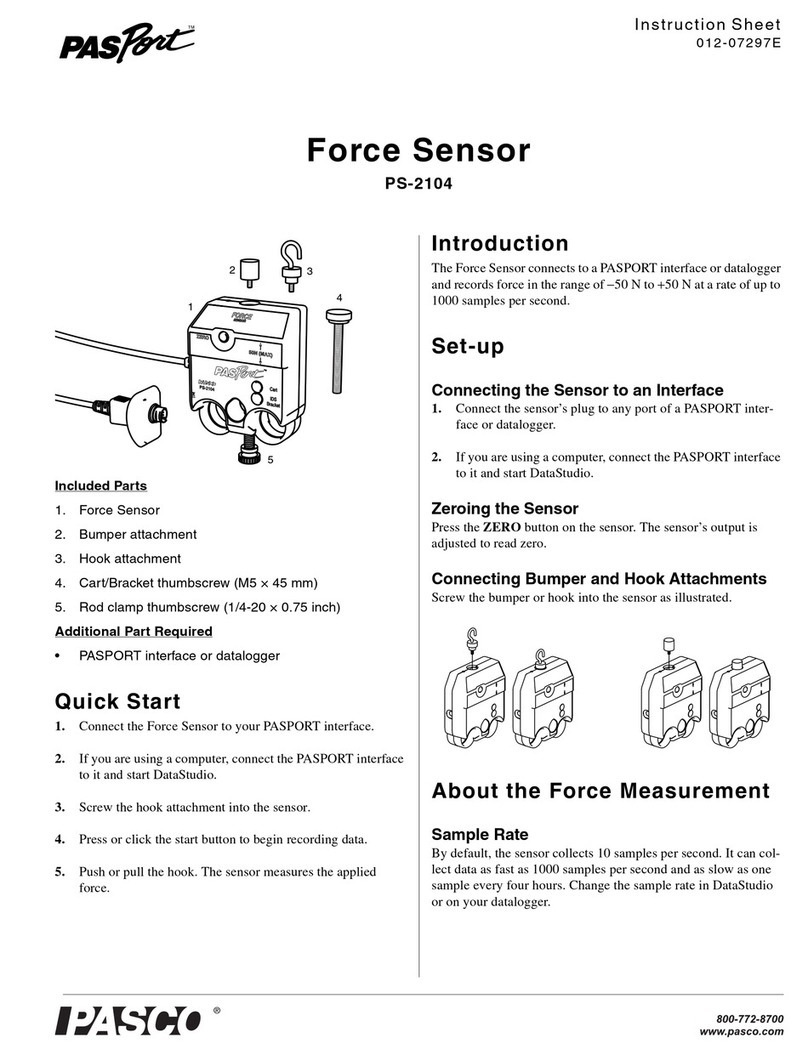
Model No. PS-2126A Collecting O2Samples
2
5. Plug one end of the connecting cable into the Oxygen
Sensing Element.
6. Plug the other end of the connecting cable into the Sensor
Amplifier.
7. Connect the Sensor Amplifier to the PASCO interface.
8. Refer to the documentation that came with the PASCO
interface and software for further instructions for data
collection.
Collecting O2Samples
To collect an atmospheric sample, hold the bottle upright and
open to the air. Insert the end of the sensing element into the
bottle. Press the rubber stopper into the neck to seal the bottle.
To collect expired air or other gas samples, place the sensing
element inside a plastic bag.
Press any atmospheric air
out of the bag. Use a tube to
fill the bag with the gas sam-
ple. Hold, tie, or clamp the
bag closed round the tube
and sensing element cable to
contain the gas sample and
exclude atmospheric air.
When doing an experiment
that requires a faster than usual response time, the response
time of the sensor may be increased by removing the white
deflector and stopper from the Oxygen Sensing Element. This
shortens the path to the sensor's membrane allowing it to be
populated more rapidly with the sample.
The purpose of the white deflector is to deflect air from an air
stream into the sensing element and provide protection for the
gas permeable membrane. It also holds the rubber stopper.
While the white deflector is removed from the sensing ele-
ment, be careful not to place sharp objects near the membrane
as puncturing the membrane could lead to damage to the sens-
ing element and electrolyte leaking from the membrane.
Removal of the deflector is not required or recommended
during typical operating conditions.
Warning: Do not allow the sensing element to contact liquids.
Calibration
The sensor is factory calibrated. However, for greater accu-
racy, you can follow these steps to calibrate the sensor:
1. With the sensor connected to a powered PASPORT inter-
face, place the sensing element in the empty sampling
bottle. Outside air has an O2 concentration 20.9%.
2. Press the CAL (20.9%) button on the sensor and hold it
for 3 seconds. The green light will flash on and off for 4
seconds, indicating that calibration is in progress.
3. After 4 seconds, the reading will stabilize at 20.9%. When
calibration is complete, the light will stop flashing.
Note: If the green light flashes rapidly after calibration, the sensing ele-
ment may be expired and it may need replacement.
Experiment: Oxygen
Production from Liver Catalase
Equipment required: Oxygen Gas Sensor with sampling bottle, beef
or chicken liver, hydrogen peroxide, pipette, mortar and pestle, ice
bath, boiling water, and safety goggles.
Safety: Always wear safety goggles when performing this experiment.
Do not allow excessive pressure to develop in the sampling bottle.
1. Place the liver in an open container and allow it to warm
to room temperature.
2. (Optional) Calibrate the Oxygen Gas Sensor (see above).
3. Grind the liver to a mushy consistency.
4. Place 10 mL of hydrogen peroxide into the clean, dry
sampling bottle.
Note: Perform step 5 through 7 carefully and quickly.
5. With a pipette, extract 1 mL of blood/homogenate from
the ground liver and release it into the sampling bottle.
6. Insert the end of the sensing element into the bottle. Press
the rubber stopper into the neck of the bottle just enough
to close the bottle, but not too tightly
7. Start data collection on the computer or interface.
8. After about 300 seconds, stop data collection.
9. Clean and dry the sampling bottle. Repeat steps 4 through
8 with cold liver homogenate that has been chilled in an
ice bath. Repeat again with liver homogenate that has
been boiled in water.
10. Compare your results from the three runs.
